-1-1-1-1.webp?width=580&name=Header_PrintedBeerCansVSBeerCanLabels%20(1)-1-1-1-1.webp)
Does the labeling of a beer matter? Yes, it sure does. This article will discuss the three critical aspects of creating a beer can label: cost, brand, and customer expectations. We will also compare printed beer cans vs beer can labels and how to choose which is best for your craft beer product.
The Holmesian Inspection: Customers Are Checking Out Your Beer Can Labels
Upon meeting Sherlock Holmes, John Watson experiences a test of Holmes’s deductive powers. After inspecting Watson’s watch for a few moments, Holmes reasoned that the watch came to Watson from his older brother, an untidy man who wasted his potential and died a drunk. The watch was worn and dented, indicating neglect, but was of high quality and costly, suggesting it was a gift, most likely from a fellow member of a wealthy family, probably his father. Haphazard grooves around the keyhole indicated that the owner was rarely sober when winding the watch. With a quick analysis, Holmes gathered much unflattering information.
What does this have to do with your beer cans and their labels?
Your containers are constantly subjected to a Holmesian inspection whenever they reach the hand of a craft beer drinker. Your label, container, graphics, wording, and packaging reveal your level of attention to detail to your customers.
Large commercial breweries deal with this by ordering massive batches of printed cans from industrial printing companies. Even though it’s expensive, it gets impressive results.
Still, wrap-around and shrink-sleeve labels are just as stunning and durable and can withstand the torture that time, handling, and moisture inflict. Plus, the technology and machinery needed to apply beer bottle labels and beer can labels is easy to add to an existing packaging line.
So, which do you choose? Direct printing or applied labels? How do you decide which labeling method is right for your brewery? Let’s look closer at printed beer cans vs beer can labels.
Printed Beer Cans
The first direct printed cans appeared in the 1950s and were primarily used only by major breweries due to cost. In the past decade, products like Tonejet’s Cyclone have given breweries the ability to directly print onto cans without sending them to a third party.
The printing is done with UV-curable inks and coatings to leave a long-lasting, high-quality image, and unlike traditional methods of direct printing, it can be done in more than six colors. Printed cans are more environmentally friendly than labels.
The Downside of Printed Beer Cans
Sounds good, but what are the downsides? Cost, no do-overs, and no texture.
Printed Beer Can Labels are Expensive
Traditional printing methods require the cans to be shipped to a dedicated printer, which means massive minimum orders of up to 200,000 cans and potentially long wait times.
If you want to buy a printer, plan on spending a lot of money — as in hundreds of thousands of dollars for even a medium-sized machine.
Once the Cans are Printed, There’s no Going Back
The next major issue is that once the can is printed, that’s it. There are no redoes. That’s the label forever (unless you get good at scraping off ink—not recommended).
No Textured Labels
Even if you accept the cost of the machine and don’t mind redoing some cans now and again, there’s one thing the printing process can’t impart: texture.
If you want to have the feel of a paper label to give a handcrafted, old-world vibe, or an embossed label to impart elegance and stateliness, you can’t. For every beer enthusiast that appreciates the environmental friendliness of a printed can, there will be another one who feels the experience is inferior to that of a traditional label with a specific tactile sensation.
Printed Labels for Beer Cans
The idea of a can with a separate label seems odd to those who are used to seeing nothing but macro-brewery printed cans; however, it’s an increasingly popular option. Cans are more accepted by craft beer drinkers than ever, and a printed label gives the handcrafted, small-batch look craft aficionados appreciate.

Using labels also means utilizing bright, bold graphics that aren’t possible when printing on a beer can. With direct printing, graphic designers must know which inks will pop on the aluminum and which won’t. With a separate label, your imagination is the limit.
There are two types of separate print labels for beer cans: wrap-around and shrink-sleeve.
Wrap-Around Labels
Wrap-around labels adhere to a beer can with adhesive. Now, it’s true that beer cans have gotten lighter and thinner over the years, so it’s reasonable to fear a greater risk of labels not adhering correctly. However, thanks to modern adhesives, properly applied pressure-sensitive and wrap-around labels stay attached in harsh conditions.
Paper Labels vs Film Labels
As for paper labels vs. film labels (printed on film material, usually in white, metallic, or clear), paper options are much cheaper. Still, remember that paper labels, while they are more environmentally friendly than film labels and have a unique texture, won’t hold up to the rigors of the cooler or the coozie the way plastic can. Even with UV varnishes and sealers, it’s a matter of time before that paper label peels off.
And yes, a film label has more negative environmental impact than paper labels or direct printing. The very properties that keep it looking sharp after hours in an ice bucket will also keep it looking fresh in a landfill. If sustainability and ecological responsibility are important to you, invest in recyclable labels.

Shrink-Sleeve Labels
Shrink-sleeve labels can't be topped for ultimate moisture protection and scratch resistance. They work by placing an oversized plastic sleeve over the can, which is heated to shrink the sleeve to the can. There’s no adhesive, just a permanent shrink-wrapped label with excellent, bold graphics around the can.
Shrink sleeves are applied to any can size, be it 8.4 oz, 12 oz, 16 oz, or 19.2 oz. The best part about shrink sleeves is that you get those bold, bright, colorful graphics of a wrap-around label along with the container coverage of direct printing. The sleeves can be made entirely opaque, or you can have clear spaces to let the aluminum show through.
If environmental issues are important to you, look for recyclable sleeves that separate from the container before recycling (a simple process thanks to the lack of adhesive). With recyclable shrink sleeves, disposal problems aren’t an issue.
Finally, ensure your graphic designer knows how the sleeve warps to fit the container. If they’re worth their paycheck, they can adapt the design.
Although shrink-sleeve labels cost more upfront, you’ll make up for it through increased sales.
Which Labeling Method Is Right For You?
Each brewery must choose what works best for them. In general, direct printing is the best option if you have a massive number of beer cans to print and the capital to spend. However, investing in an entry-level printer and labels is a better fit if working within a tight budget and brewing smaller batches.
If labels are the way to go for your brewery, download our Brewer’s Guide to Craft Beer and Microbrew Labeling Equipment to learn more about different beer label types, the pros and cons of each, and how to pick the right labeling equipment.
At Pack Leader USA, we offer the highest quality labeling machines for all your bottle and can needs. Contact us with any questions and let’s find the right labeling equipment to suit your product and your budget.
.webp?width=200&height=114&name=2x-Packleader-logo-large%20(1).webp)

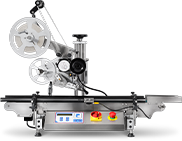
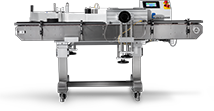
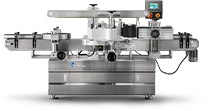
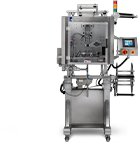
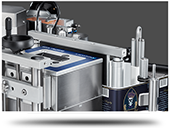
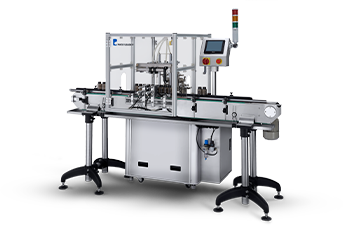
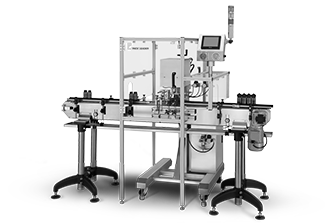
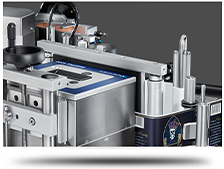
![Beer Labeling Equipment Guide [Download Now]](https://no-cache.hubspot.com/cta/default/1818694/interactive-176745676965.png)





.webp?width=360&name=2x-color-logo%20(1).webp)